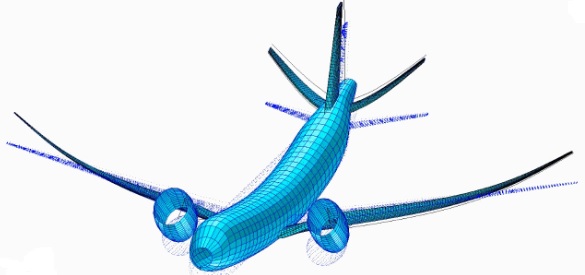This course is a collection of special topics in the application of solid and fluid interaction in aerospace, which is called aeroelasticity. The course describes basic aeroelastic phenomena that emerge due to the interaction of aerodynamic (in particular unsteady), inertial, and elastic forces emerging during the relative movement of a fluid (air) and a flexible body (aircraft) ( Fig.1), with special emphasis on problems related to fixed wings. Aeroelasticity plays a major role in the design, qualification and certification of aircrafts, as it contributes to the definition of the flight envelope and affects various performance indicators.

Figure.1: Collar’s Aeroelasticity Triangle.
The course is organized according to the following plan:
![]() Introduction: history of aeroelasticity, aerospace
aeroelastic phenomena; basic concepts in aeroelasticity, examples including the
role of aeroelasticity beyond aeronautical engineering.
Introduction: history of aeroelasticity, aerospace
aeroelastic phenomena; basic concepts in aeroelasticity, examples including the
role of aeroelasticity beyond aeronautical engineering.
![]() Static aeroelasticity: 2D wing divergence speed; finite wing
torsional divergence speed; lift distribution over straight and swept wings; aileron
effectiveness and reversal for both cases 2D and 3D.
Static aeroelasticity: 2D wing divergence speed; finite wing
torsional divergence speed; lift distribution over straight and swept wings; aileron
effectiveness and reversal for both cases 2D and 3D.

Figure.2: Static aeroelasticity.
![]() Dynamic aeroelasticity: classical and non-classical flutter;
flutter coupling; wing flutter critical speed; prevention of flutter and the
analysis solution of flutter; buffeting.
Dynamic aeroelasticity: classical and non-classical flutter;
flutter coupling; wing flutter critical speed; prevention of flutter and the
analysis solution of flutter; buffeting.

Figure.3: Dynamic aeroelasticity

- Trainer/in: FATIMA ZOHRA BELKHELFA
